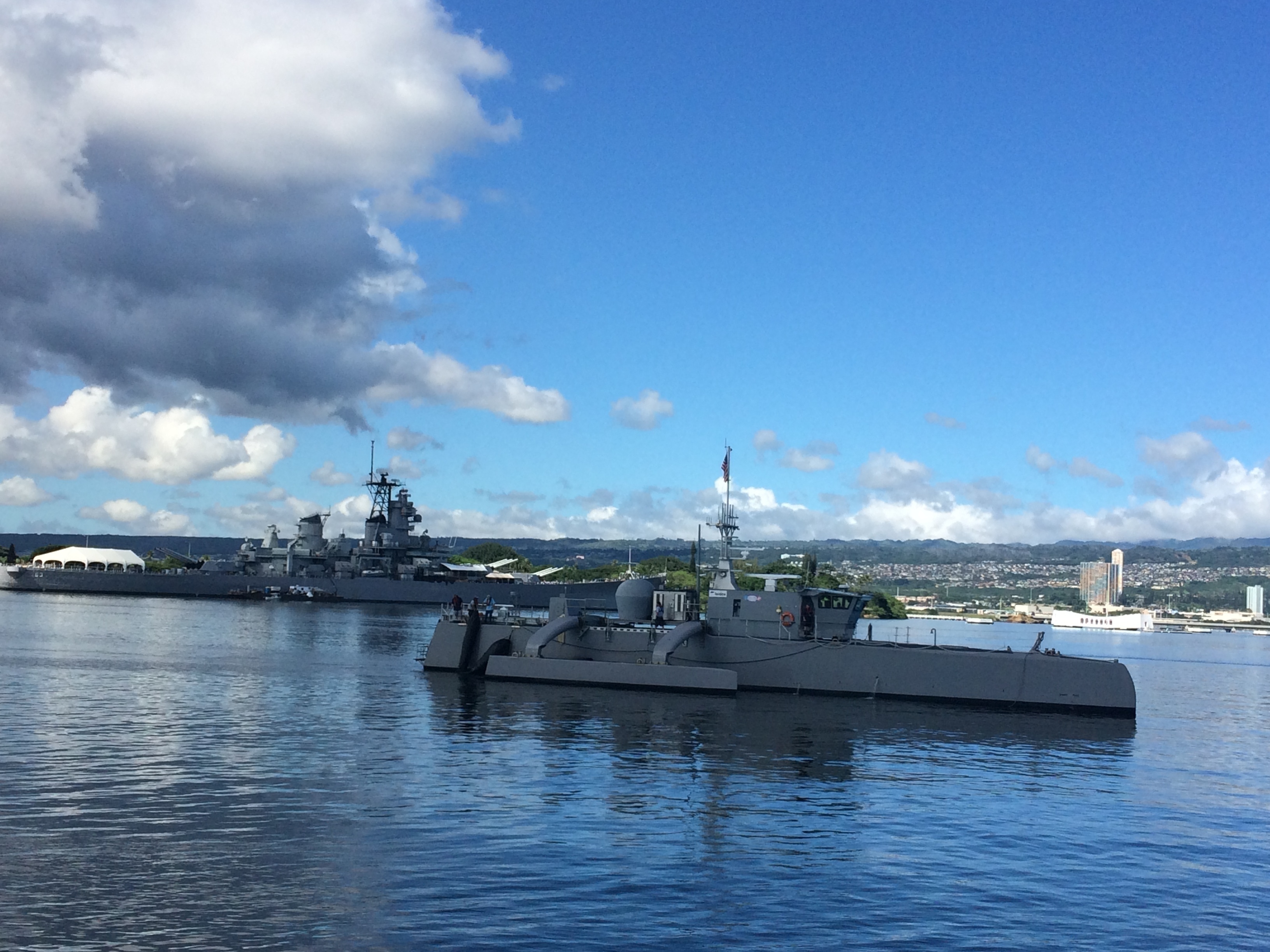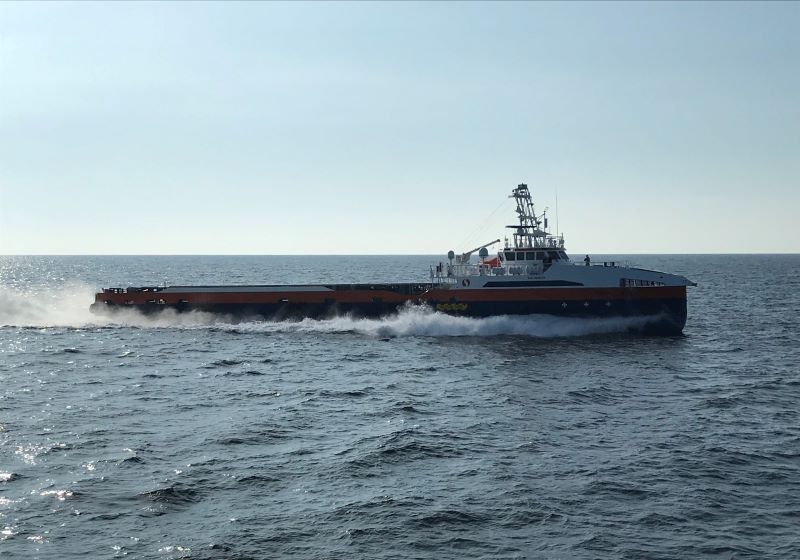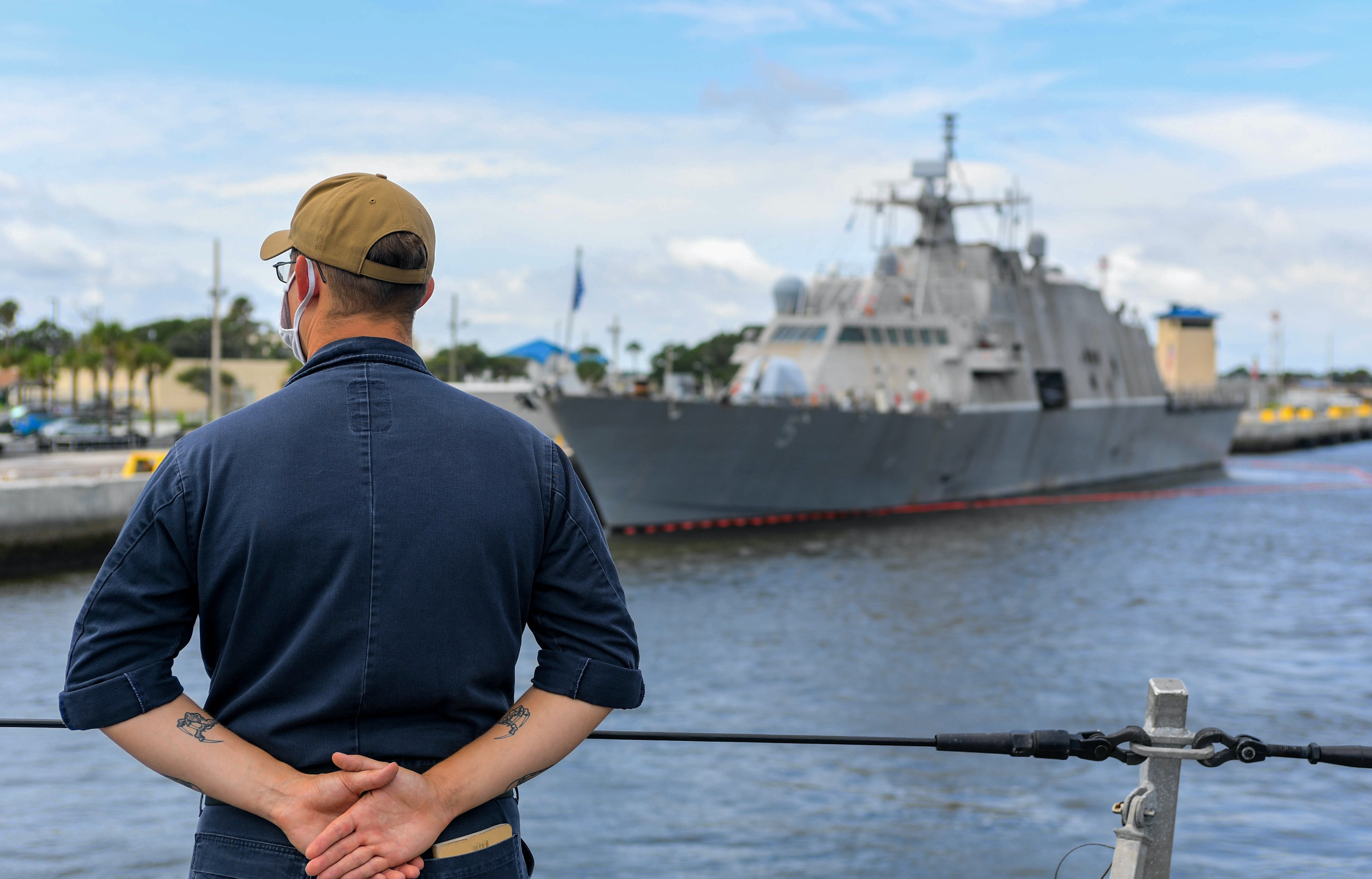
Sea Hunter, an entirely new class of unmanned sea surface vehicle developed in partnership between the Office of Naval Research (ONR) and the Defense Advanced Research Projects Agency (DARPA), completed an autonomous sail from San Diego to Hawaii. US Navy photo
As the Navy experiments with its unmanned surface vehicle prototypes, the service plans to employ the Sea Hunter Medium USV in fleet exercises in the next fiscal year, the program executive officer for unmanned and small combatants said today.
Speaking at a Navy League virtual event, Rear Adm. Casey Moton laid out his Fiscal Year 2021 priorities, or what he called “resolutions” for the new year, one of which is to continue prototyping unmanned systems and refine the service’s acquisition approach for the platforms.
“Our FY ’21 plans include the use of Sea Hunter in multiple fleet exercises, in tactical training events — with the Sea Hunter and the Overlord USVs we will exercise manned ship control on multiple USVs, test command and control, perform as part of the surface action groups, and train Navy sailors on these platforms,” Moton said, referring to the Pentagon’s Strategic Capabilities Office’s Overlord large USV program.
“Integration of autonomous capability is being performed on our program of record C4I systems and the AEGIS combat system is being adapted to make LUSV and MUSV part of our netted fleet, although firing decisions will remain with the human in or on the loop,” he added, citing the Navy’s Large Unmanned Surface Vehicle and Medium Unmanned Surface Vehicle programs.
The Navy’s Surface Development Squadron One, which has been tasked with developing the concepts of operations for unmanned surface vessels, currently has one Sea Hunter prototype, with a second Sea Hunter and the two SCO Overlord prototypes slated for turnover to the squadron in the upcoming fiscal year.
“This year our two Overlord vessels will transit to the West Coast and execute a busy year of testing which includes autonomous transits and development vignettes. Testing has included integration of autonomy software and automation systems and perception systems, demonstrating the ability to perform safe, autonomous navigation in accordance with [the Convention on the International Regulations for Preventing Collisions at Sea] rules in situations with multiple contacts and varying speeds and sea states,” Moton said.
“In FY ’21, we are pushing the duration of transits increasingly longer, and we will soon be working up to a 30-day transit. Both vessels are ready to conduct a full year of testing and experimentation, including government-furnished C4I payloads; combat system payloads; hull, mechanical and electrical upgrades; and with more complex autonomous behaviors,” he continued. “They will continue to demonstrate automation functions of the machinery control systems, plus health monitoring by a remote supervisory operation center with the expectation of continued USV reliability. The reliability work is a key success for unmanned vessels.”

A Ghost Fleet Overlord test vessel takes part in a capstone demonstration during the conclusion of Phase I of the program in September. Two existing commercial fast supply vessels were converted into unmanned surface vessels (USVs) for Overlord testing, which will play a vital role in informing the Navy’s new classes of USVs. US Navy photo.
The focus on prototyping in the upcoming fiscal year comes as lawmakers have suggested the service is moving too quickly on unmanned technology and argued the Navy still needs to test the platforms and determine how they will function in the larger fleet architecture. Recently, the Navy had to reconfigure its acquisition strategy for its LUSV as Congress sought to expand oversight of the program. Earlier this month, the Navy announced $42 million in contracts to six different companies to perform LUSV studies.
Moton said his dialogue with lawmakers is ongoing and he expects the Navy and Congress to reach an understanding on the path forward for moving from prototypes to programs of record for the unmanned platforms.
“All of these efforts for both USVs and [unmanned undersea vehicles] are experimentation work — our acquisition work with industry, the fleet work and the [chief of naval operations]-directed Navy work will together over the next two to three years have us well-positioned to transition to programs of record,” he said, referring to Chief of Naval Operations Admiral Mike Gilday’s unmanned campaign plan, which is meant to create standards to manage unmanned systems.
On the UUV side, the program office is slated to issue awards for the Medium Unmanned Undersea Vehicle and the Phase 2 Snakehead Large Diameter UUV in FY 2021, according to Moton.
While the office has a busy upcoming year in the unmanned realm, Moton listed his five other priorities for the new fiscal year: finish detail design for the new guided-missile frigates before construction starts; build the remaining LCS ships as scheduled; enhance maintenance work for LCS and increase the ships’ reliability; field the LCS anti-submarine warfare package; and finish operational testing of the LCS mine counter-measure systems.
“We successfully deployed our [variable depth sonar] off LCS this year and are in tests now. This fiscal year, we will complete testing on [the] Freedom variant and [reach initial operational capability of] the package and begin integration and test off [the] Independence variant,” Moton said of plans to field the ASW package.

Information Specialist 1st Class Matthew Stephenson mans the lines as the Freedom-variant littoral combat ship USS Sioux City (LCS-11) gets underway on Aug. 30, 2020. US Navy Photo
“The system is detecting and tracking submarines now, and this critical offensive ASW capability will be ready to field on LCS,” he added. “Our work on this [new year’s resolution] is critical for another reason: because FFG(X) will operate the same VDS as part of its multi-mission capability.”
As for the MCM systems’ operational testing, Moton pointed out that the Navy has opted to test each system individually before putting them together as an entire package for testing on the ship. The program office in FY 2021 plans to perform testing for the minehunting USV, the Knifefish UUV and the Unmanned Influence Sweep System (UISS). These are the last major systems the Navy needs to test for the MCM mission package, as the service has already tested the airborne platforms.
“The package-level tests is important as a demonstration, but the system-level test that we’re doing now – on and off LCS – are where we show that we can find and kill mines reliably with these systems,” he said.










No comments:
Post a Comment
How did you like the post, leave a comment. I would appreciate hearing from you all. Best wishes from JC's Naval, Maritime and Military News